

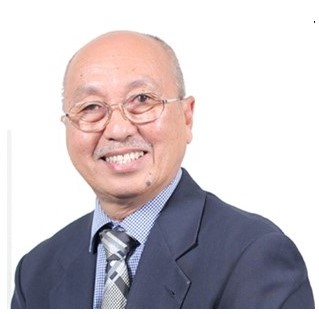
Keynote speaker: Emeritus Prof. Dato’ Dr. Wan Mohamad Nasir Bin Wan Othman DPPJ, JMN, KMN, AMP, DDS(USU), MHPEd.(UNSW), DPH(Dent)(Syd), Dip.DH(Dublin), Cert.HR(Manchester), FICD, FICCDE
Lecture: Advancement in dentistry: Faster and smarter
Abstract: The objective of this presentation is to explore the advances in dentistry that influence the manner the profession performs its functions, the technology that changes the way things are done and the rise of consumerism. Dentistry has progressed at a rapid pace since the days when dental procedures were performed by barbers and other craftsmen. The establishment of Baltimore College of Dental Surgery in 1840 paved the way to formal education in dentistry and development of scientific approach. Since then, dentistry has moved forward in a purposeful way. It is constantly changing to best suit the patient’s needs and the requirements of the profession. The development of modern dentistry coincided with the progress of the industrial revolution from emphasis on mechanisation to automation and to information technology. The present fourth industrial revolution that integrates biological, physical and digital elements opens the technological advancement in dentistry for a more accurate diagnosis (3D imaging, caries diagnosis and detection of oral cancer) and efficient treatment (CAD/CAM and dental lasers). The practitioner-patient relationship is changing from paternalistic to patient-centred approach that involves autonomy of patients. The patients consider themselves as healthcare consumers. They are knowledgeable but not always well-informed; able to retrieve information from internet but rarely vetted for accuracy or fact. Changes in requirements for practicing certificate, rise of specialty and sub-specialties and availability of web-based education facilitated by digital technology has attracted attention of practitioners to pursue continuing professional development (CPD) activities. Dental practitioners are now venturing to perform procedures beyond the usual, that include management of TMJ disorders; sleep apnea; use of botox in dentistry, smoking cessation and other novel procedures. Dentistry continues to be recognised as a respected profession and has successfully transformed into an entity that is faster, smarter, better, safer, and more comfortable for their clients.
Speaker profile: Dr. Wan Mohamad Nasir bin Wan Othman is the Founding Dean, Faculty of Dentistry, Universiti Sains Islam Malaysia (USIM) and served in this capacity for eight (8) years. He joined USIM in October 2006, soon after mandatory retirement. Dr. Wan Mohamad Nasir served the Ministry of Health for about 30 years. His last post prior to mandatory retirement was the Director for Oral Health Division, Ministry of Health Malaysia and Registrar of the Malaysian Dental Council. He was also the Vice-Chairman, Public Health Section for the World Dental Federation (FDI) from 2002 to 2006. Presently, he is a member of Malaysian Dental Council, member of Dental Public Health Sub-Commitee of the National Specialist Register as well as several other professional bodies. He was conferred Emeritus Professor during the 13th Convocation, USIM in November 2015. He was also conferred Distinguished Fellow of Asia by the International College of Dentists in 2016.
His career in dentistry started in 1976 as a dental officer at a government dental clinic in Kota Bharu, Kelantan. He was later transferred to the Dental Training School in Penang and some years later became its Director. He has gained considerable experience in managing oral health care services through the posting as Dental Director for the states of Perlis, Negeri Sembilan and Kedah before his transfer to the Ministry of Health, Malaysia in 1996.
He has published many articles and presented a number of papers at national and international forums on dental education and oral health. His research interests include programme development for oral health, education of health personnel and health-related quality of life.
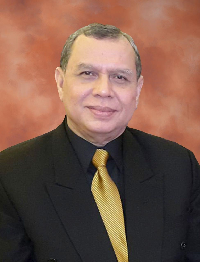
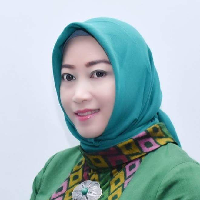
Speakers: (1) Prof. Dr. Ismet Danial Nasution, DDS., Ph.D, Sp.Pros(K); (2) Dr. Ricca Chairunnisa, DDS., Sp.Pros(K)
Lecture: Temporomandibular Disorders in Dentulous and Edentulous Patients
Abstract: Temporomandibular disorders (TMD) is a term given to clinical problems that involve masticatory muscles, temporomandibular joints and related structures, or all of them. Although the etiology of TMD is not yet fully understood, it has been generally recognized to be of multifactorial etiology. Signs and symptoms of TMD that are present in patients with natural teeth can also occur in edentulous patients. These differences can appear in various combinations and different severities. TMD has achieved an important role in dental care because of its high prevalence. The presentation will explain the publication of literature about the factors that influence TMD in both dentulous and edentulous patients with the aim of analyzing the findings in the latest research and the need for further research. At the end of the presentation, some case reports on TMD treatment done at Prosthodontics Clinic Dental Hospital Universitas Sumatera Utara, will be described.
Speaker profile: Dr. Ricca Chairunnisa is a lecturer in Department of Prosthodontics, Faculty of Dentistry, University of Sumatera Utara in Indonesia. She is also the secretary of the Postgraduate Program of Prosthodontics for the department. From 2012 to 2018, Dr. Ricca has published 16 papers in various journals such as Dentofacial Dentistry Journal, Dentika Dental Journal, International Journal of Oral Health Dentistry and Advances in Health Science Research about TMD. She has presented her works in various scientific meetings as well, for instance, Medan International Prosthodontic (INPRO) Scientific Meeting, Dental Information & Scientific Forum, Indonesian Prosthodontic Scientific Meeting and International Indonesian Prosthodontic Meeting (IIPROM). She is currently the secretary for Indonesian Community of Prosthodontist (IPROSI) Medan Branch.
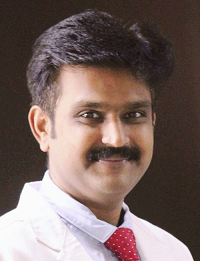
Speaker: Prof. Dr. Aravind Kumar S
Lecture: Trends in Next Generation Orthodontics
Abstract: The world is moving at a rapid pace with technology improving each and every day. Some of these technological advancements are also being incorporated into the field of orthodontics and hence our speciality has grown leaps and boungs over the past few decades. We have had massive improvements in the quality of diagnostic aids, methods of treatment planning, various advancements in the appliances used in the treatment. From 2D radiographs to the development of 3D imaging, virtual planning, incorporation of artificial intelligence and 3D printing, there is a massive paradigm shift in the way in which we practice orthodontics nowadays.
Many clinics around the world have started implementing the digital workflow to improve their speed and efficiency. Digital workflow has several advanctages including less storage space as well as helps in faster and more accurate treatment planning. Virtual planning of treatment has helped us in better visualising multiple treatment plans which also improves patient acceptance to treatment. 3D printing has helped us in custom fabrication of appliances like the aligners which have revolutionised the appliance design in the aesthetic stand point.
This lecture will focus on these recent trends in Orthodontics which will equip the next generation of orthodontists in bettering their patient care and practice management.
Speaker profile: Dr. Aravind Kumar completed his orthodontic specialty training at Saveetha Dental College and Hospitals in 2004. He also completed his Membership in Orthodontics at the Royal College of Surgeons Edinburgh and Royal College Physicians & Surgeons Glasgow, UK. He is currently the Head of the Department of Orthodontics & Dentofacial Orthopedics at the Saveetha Dental College Hospitals, SIMATS, Chennai, Tamil Nadu, India.
He is an eminent academician and renowned researcher in Orthodontics. He has around 15 years of Teaching experience. He is an editorial board member in various journals indexed in Scopus Database and peer reviewer in several dental journals to his academic credit. He has been appointed as the examiner for the MOrth examination conducted by the Royal College of Surgeon & Physician Glasgow.
During his years as a faculty staff, Dr. Aravind was awarded the Favorite Teacher award in the year 2013 and Best Post Graduate Teacher Award in the year 2014 at Saveetha Dental College & Hospitals. He is also the recipient of Best Dental Educator Award at the World Dental Congress, United Kingdom In 2018.
His current research focuses on using new imaging technology, including 3D photogrammetry, in orthodontic diagnosis and treatment planning. His work has been published in peer-reviewed indexed journals and presented his research work at various national and international conferences.
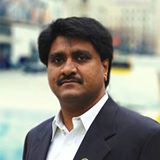
Speaker: Dr. C. J. Venkatakrishnan, M.D.S, Ph.D
Lecture: Customization of Implant Insertion Torque in Different Bone Densities
Abstract: Bone density is a key parameter for implant placement and is an important tool for the predictability of successful implant treatment. Various classifications of bone quality have been proposed to aid in treatment planning for dental implants. Poor bone density is a common problem resulting from defective bone formation with increase in porosity and bone fragility. Such conditions may affect the osseointegration of dental implants and some studies suggest that implants placed in low density bone have higher failure rates.
Factors that are important to the success of dental implant treatment include implant factors like biomaterial, biocompatibility, and design issues related to the dental implant; patient factors, such as general health, local tissue health, and quality and quantity of bone; and procedural factors such as osteotomy, insertion torque, timing of loading, healing duration, biomechanical loading and prosthetic design.
Osseointegration of dental implants may be affected by implant insertion torque. Implant insertion torque is directly proportional to the bone density. Many studies have been carried out to investigate the optimum insertion torque for a successful implant osseointegration. Previously implant insertion torque values that have been suggested were not customized for individual bone quality.
Bone quality and quantity are typically estimated from radiographs or at the time of implant site preparation. Bone density information obtained from CBCT and Implant insertion torque values from Finite Element Analysis investigations can give us an insight into the optimal implant insertion torque to be used for favorable osseointegration and implant success for different bone densities.
Therefore, osteoporotic patients may require modified implant insertion torque for successful osseointegration. In this presentation, implant insertion torque values have been suggested for varying bone densities so as to provide a clinical guideline for implant insertion which is patient-specific. Such new evidence can help implantology evolve from being restricted to patients with good bone densities to also include those with poor bone densities.
Speaker profile: Dr. Venkatakrishnan is a Fellow of International College of Dentists and also a Fellow of Indian Society for Dental Research. He completed the clinical course in Maxillofacial rehabilitation from Institute of Maxillofacial Prosthetics and Technologists (UK) and also completed the Nobel Fellow Programme in implant and esthetic dentistry. He completed PhD in the year 2018. He serves as secretary of Indian Prosthodontic Society - Tamil Nadu State Branch and EC member of Indian Prosthodontic Society. He is a member of Editorial board in Indian Prosthodontic Society, Indian Journal of Dental Research and Clinical Dental update and Research and Outside Expert panel – Thesis advisory committee member for Saveetha University and SRM University, Chennai.
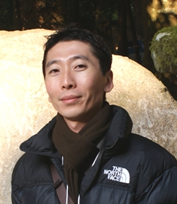
Speaker: Prof. Heng-Li Huang, PhD
Lecture: Three-dimensional biomechanical analyses of dental implants
Abstract: In recent years, cross-disciplinary research on dental implants has become more and more vigorous, making studies related to dental implants more and more exciting. Using the three dimensional (3D) engineering tools, for example: computer aided design (CAD), medical imaging technique, finite element analysis (FEA), and in-vitro strain gauge experiments has become more and more popular in the researches of dental implant. In this lecture, the presenter will introduce how to apply above techniques and investigate some interesting biomechanical issues in dental implant, for example: design parameters in small diameter of dental implant, four implants supporting mandibular full-arch fixed dentures (All-on-Four treatment) and 3D bone-to-implant contact area (or ratio) in relationship to primary implant stability.
Speaker profile: Prof. Huang is a professor and director in School of Dentistry & Biomechanics Labs, China Medical University in Taiwan. His research interests are Biomechanics, CBCT imaging analysis, Finite Element Analysis (FEA), Computer Aided Design (CAD), Dental Implant Design, and Antibacterial Metallic Coating Materials.
He is currently the editor for Journal of Dental Science and Journal of Medical and Biological Engineering. From 2006 to 2019, Dr. Huang has already published more than 80 papers in SCIE Journals including the fields of Dentistry, Oral Surgery & Medicine (Journal of Dental Research, Clinical Oral Implants Research, Clinical Oral Investigations, etc.), Biomedical Engineering (Journal of Medical and Biological Engineering. Computers in Biology and Medicine, etc.), Medical and Multidisciplinary Sciences (Journal of the Formosan Medical Association, PLOS One), and Materials Sciences (Surface and Coatings Technology, Thin Solid Films, Materials, Metals, etc.)
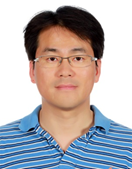
Speaker: Prof. Jui Ting Richard Hsu, PhD
Lecture: Does Orthodontic Treatment Affect the Alveolar Bone Density?
Abstract: The purpose of this study was to assess the bone density changes around the teeth before, during, and after orthodontic treatment. Dental cone-beam computed tomography (CBCT) was employed to measure the changes in bone density around six teeth in the anterior maxilla of eight patients before and after orthodontic treatment. Each patient underwent three dental CBCT scans: before treatment (T0); at the end of 7 months of active orthodontic treatment (T1); after several months (20–22 months) of retention (T2). The Friedman test was applied to evaluate the changes in the alveolar bone density around the teeth according to the three dental CBCT scans. From T0 to T1, a significant reduction in bone density was observed around the teeth (23.36 ± 10.33%); by contrast, a significant increase was observed from T1 to T2 (31.81 ± 23.80%). From the perspective of the overall orthodontic treatment, comparing the T0 and T2 scans revealed that the bone density around the teeth was relatively constant (a reduction of only 0.75 ± 19.85%). The results of the statistical test also confirmed that the difference in bone density between T0 and T2 was nonsignificant. During orthodontic tooth movement, the alveolar bone density around the teeth was reduced. However, after a period of bone recovery, the reduced bone density recovered to its previous state from before the orthodontic treatment. However, the bone density around approximately 10% of the teeth in this region could not recover to 80% of its state from before the orthodontic treatment.
Speaker profile: Prof. Richard Hsu is a professor in School of Dentistry & Biomechanics Labs, China Medical University in Taiwan. His research interests are Biomedical Engineering, Biomechanics, CT/CBCT imaging analysis, Finite Element Analysis (FEA), and Medical Device.
He is currently the editor for Journal of Medical and Biological Engineering and Journal of Medical Imaging and Health Informatics. From 2002 to 2019, Dr. Hsu has published more than 90 papers in SCI Journals in the fields of Dentistry, Oral Surgery & Medicine (Journal of Dental Research, Clinical Oral Implants Research, Clinical Oral Investigations, etc.), Biomedical Engineering (Journal of Biomechanics, Medical Engineering and Physics, Journal of Medical and Biological Engineering, Computers in Biology and Medicine, etc.), Medical and Multidisciplinary Sciences (Journal of the Formosan Medical Association, PLOS One).
Total Visits : 1900